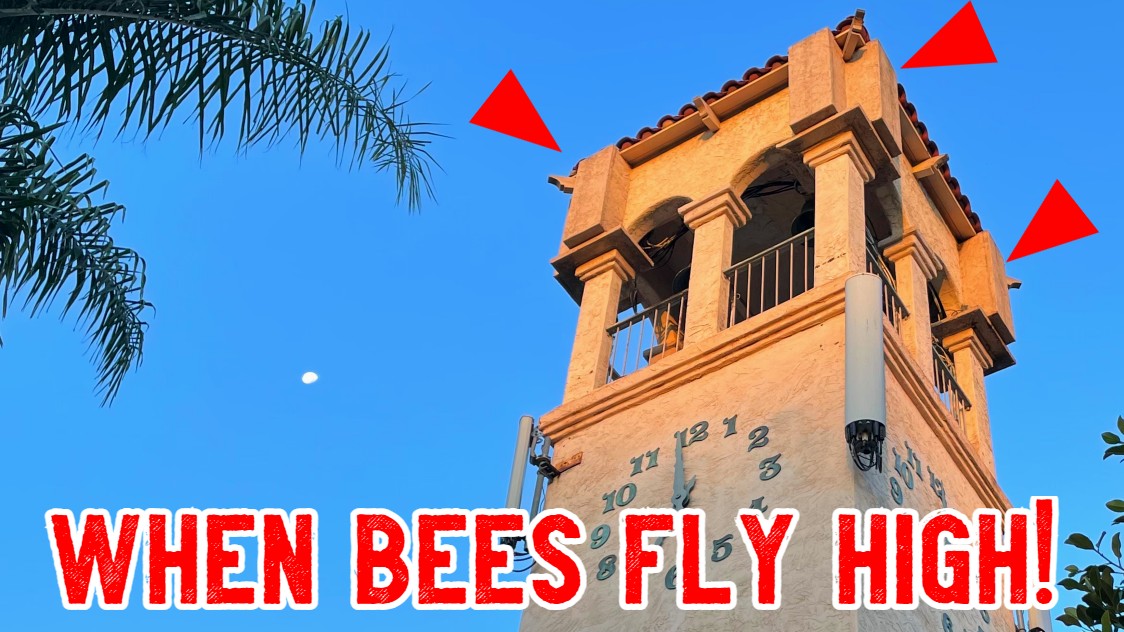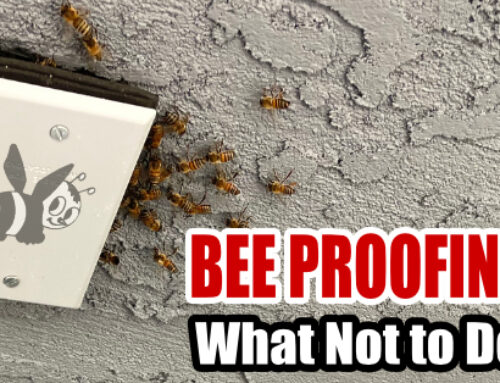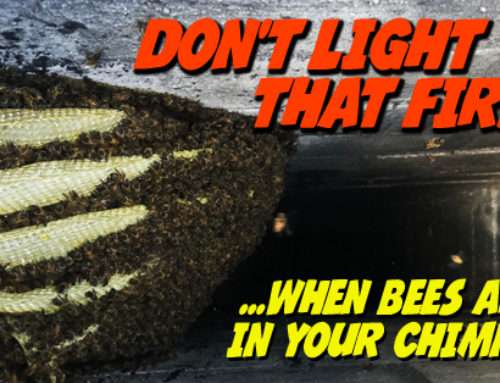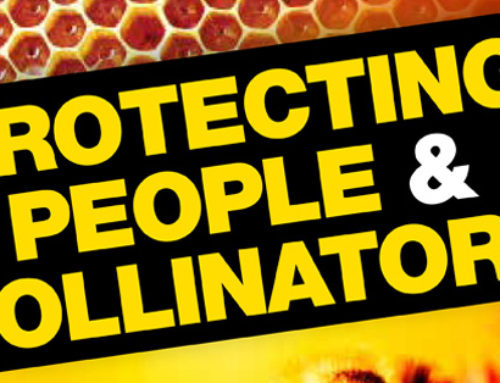When it comes to the world of bee removal, not all jobs are created equal. Bees can build hives in all sorts of places, and not all removal jobs can be performed in the same way. Some bee removal jobs are straight forward. The colony is exposed and easy to reach. These are usually removal jobs that can be done very quickly and require little prep work. Then there are the difficult jobs. The ones so high up, you need binoculars to see the bees.
For whatever reason, bees love to build their colonies up high, at the apex of whatever structure they decide to land on. That’s not to say that they never choose lower spots, because at times they will. For the most part, however, the apex (tallest point) of a structure seems to be the most common place where a bee colony will infest.
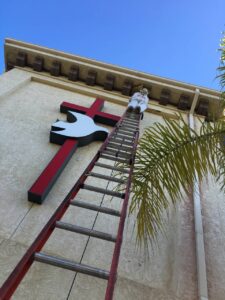
Take for example this church. Where do you suppose the bees landed? Somewhere easy on the lower levels? Nah, that would be too easy. Of course the bees chose to infest the very apex of the steeple.
Then there is this high rise building. Yep, you guessed it. Right at the top where no can reach it easily. How about this crane? That’s right, way at the top.

Whenever bees set up a hive in hard to reach place, it can often be a challenge when trying to remove the nest. The tallest ladder we use on any of our jobs is a 32 foot ladder, which can sometimes reach a third story level. But what do you do when the bees are up higher than 32 feet? What do you do if a ladder cant reach due to obstructions? Not all jobs can be reached safely (if at all) from a ladder. That’s where equipment rentals come in. Below is a list of the three most common types of list equipment we have used to reach a hive up high.
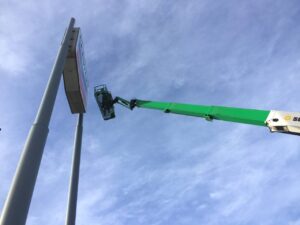 Boom Lift: A boom lift is a great way to reach a hive if you have the ability to drive heavy equipment up close next to the structure. Sometimes an articulating boom will be needed to reach over or into areas that might be in the way. There are limitations on where and how a boom lift can be used. Sometimes permits are needed if the lift will be on a public street and impede traffic. Sometimes a boom lift will not be safe to use on concrete or delicate pathways that can’t support the weight. For instance, how would you get a boom lift into an interior corridor of an apartment complex like this.?
Boom Lift: A boom lift is a great way to reach a hive if you have the ability to drive heavy equipment up close next to the structure. Sometimes an articulating boom will be needed to reach over or into areas that might be in the way. There are limitations on where and how a boom lift can be used. Sometimes permits are needed if the lift will be on a public street and impede traffic. Sometimes a boom lift will not be safe to use on concrete or delicate pathways that can’t support the weight. For instance, how would you get a boom lift into an interior corridor of an apartment complex like this.?
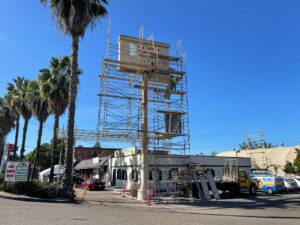
Scaffold: Whenever a boom lift is not workable, a scaffold set up is often the next best way to get to the hive. The downside of a scaffold set up is that it requires a lot of physical effort to get to the top. Not only do you need the technician to climb the scaffold, he often needs to bring up heavy tools and equipment.
Scissor Lift: A scissor list is a good option if the ground beneath the hive is flat and level. The challenges to this type of equipment are when there is landscaping or plants in the way. Another challenge is if there is a slope or hill, the equipment will not be stable.
So by now you may be asking, what if none of the three types of equipment above can reach the bees? What then? In these rare cases, there are three options:
Crane: A crane is rarely used to reach a beehive and only used in the most extreme circumstances. In some states its actually illegal to use a crane. This is the equipment choice of last resort, when all other types of equipment are unable to reach the hive. An example of this would be inside an interior corridor of a high rise building, where normal lift equipment is unable to gain access. Another example would be down a huge hillside or canyon, that can not be accessed by a road or pathway. The disadvantages of this type of equipment are numerous. The first is the cost. Cranes are ridiculously expensive. They also usually require city permits that take lots of time and money to obtain. Additionally, there are very few bee removal technicians brave enough to agree to work off a crane.
Harness: Another piece of equipment that is rarely used on bee jobs is a harness. This would be a safety harness worn by the technician who would then be lowered by a connected cable to reach an area that other equipment (like a boom, scissor, or scaffold set up) cant reach. An example is a high-rise building downtown, where the bees are high up on the side of the building, perhaps 80 feet up or more. In these rare cases, the only way to reach the bees would be to be lowered in a harness off of the roof and/or window, above the area of the infestation. Again, this is a scary and risky proposition for most bee removal technicians. A better alternative to a harness would be a platform that is anchored to the building, similar to what window washers use to clean the windows of high rise buildings.
Fortunately for our bee removal technicians, most jobs 2nd story or lower. Although many of these jobs often require safety and fall protection equipment, rental equipment is not usually necessary. For jobs where the bees are up higher, lift equipment is almost always the safest way to gain access to a hive.

